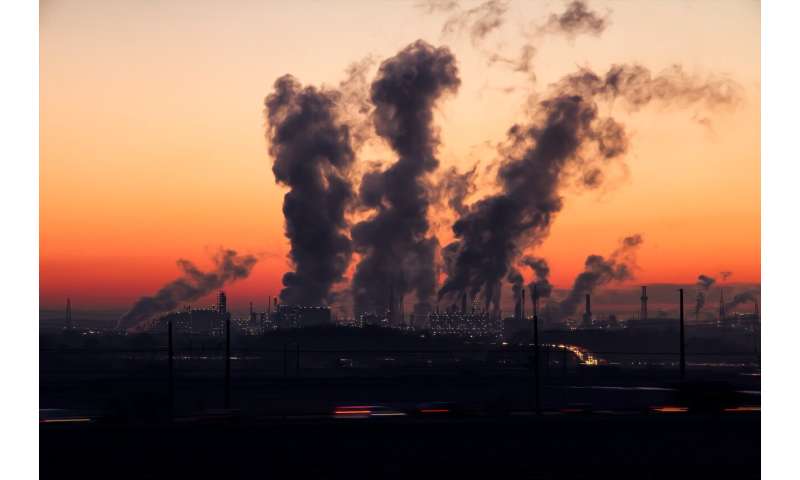
In the United States, annual average levels of fine particulate matter—PM2.5, a measure of solid particles and liquid droplets that are 2.5 micrometers or smaller found in the air—declined 24% from 2009 to 2016, then increased 5% between 2016 to 2018. In a new study, researchers explored how the increase occurred by looking at economic activity, wildfires, and enforcement of the Clean Air Act during this period. They found that the increase was associated with 9,700 additional premature deaths, and that these deaths represent damages of $89 billion.
The study, by researchers at Carnegie Mellon University and the National Bureau of Economic Research (NBER), is published as an NBER working paper.
“The health implications of this increase are significant,” notes Karen Clay, professor of economics and public policy at Carnegie Mellon University’s Heinz College, who led the study. “The number of deaths and the damages highlight the importance of air pollution as an important and timely policy issue.”
To learn more about the increase, the researchers used data from the Air Quality System database of daily monitored readings provided by the U.S. Environmental Protection Agency (EPA). The EPA maintains a network of air pollution monitors because PM2.5 is regulated under the Clean Air Act. In total, the researchers studied 653 counties with monitors for fine particulate matter. They also looked at information from the EPA’s enforcement database, as well as vital statistics (population and mortality rates) by county.
Increases in PM2.5 from 2016 to 2018 were observed in many U.S. counties. In the West and Midwest Census regions, fine particulate matter rose during this period; in the Northeast and South Census regions, it stayed the same. Every year, the EPA designates each county as having met or failed to meet air pollution standards under the Clean Air Act. Increases in fine particulate matter occurred in counties that met the standards as well as in those that failed to meet them, according to the study.
The rise in PM2.5 increased the number of premature deaths of adults over age 30 by about 9,700 from 2016 to 2018, with 80% of the premature deaths occurring among the elderly and 20% of the premature deaths among adults ages 30 to 64, the study found. These calculations use the same methods used by the EPA to relate fine particulate matter to mortality. The damages of $89 billion are calculated by multiplying deaths by the EPA’s value of a statistical life.Increases in PM2.5 in the air were especially pronounced in California, with 43% of the rise in deaths nationally from 2016 to 2018 occurring in the state.
The researchers present evidence on three possible causes for the national increase:
Source: Read Full Article
